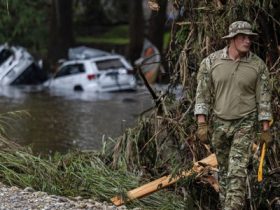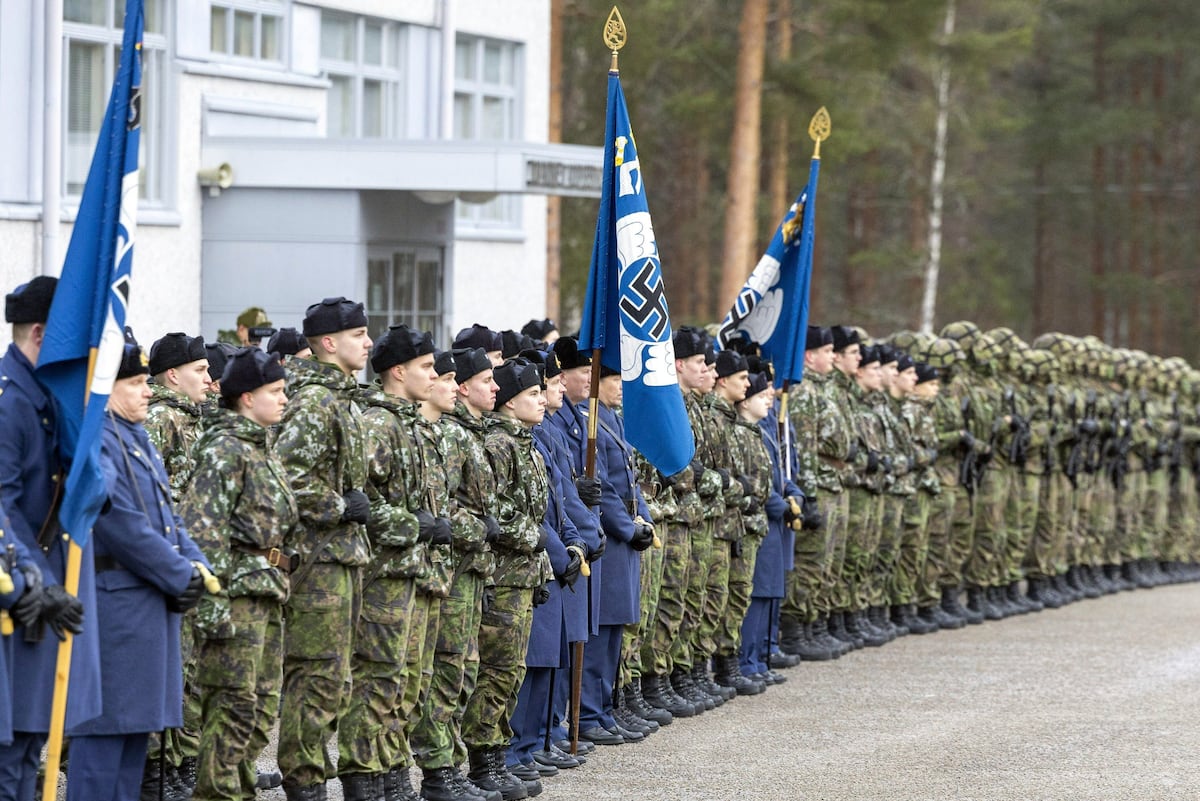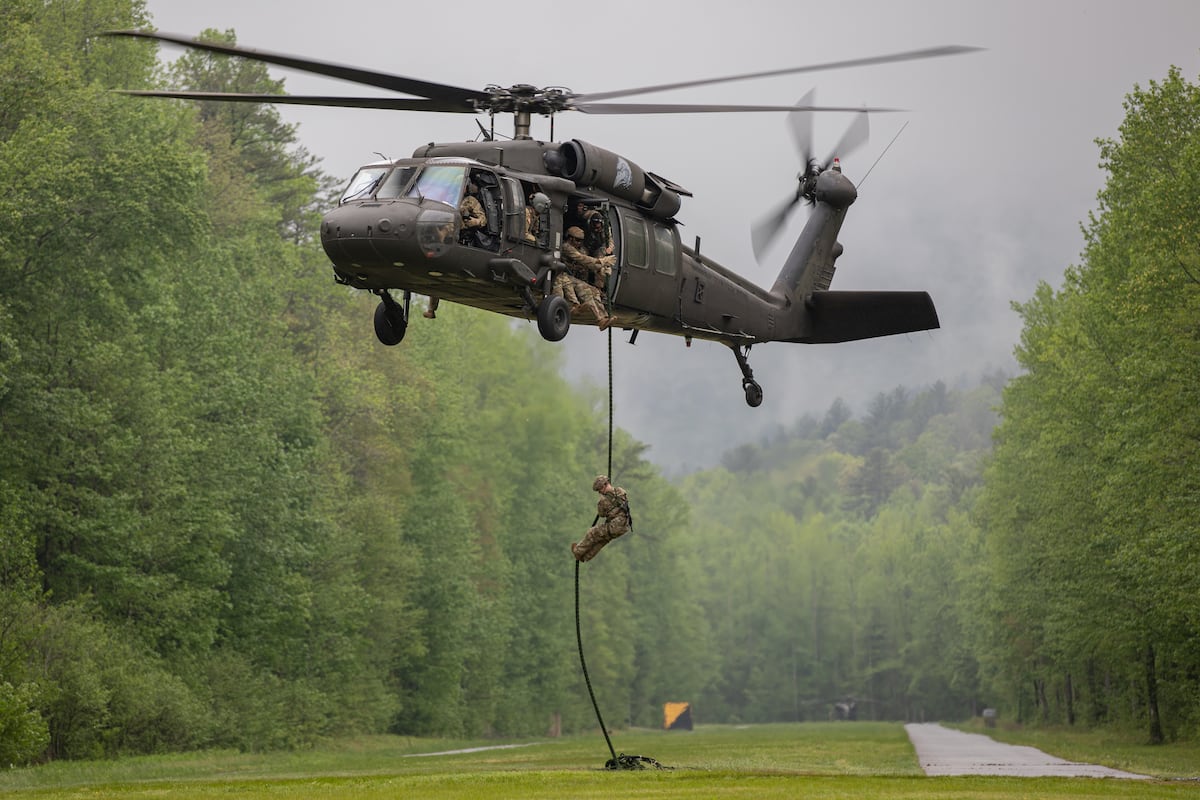Ukraine weapons pause grows. The Pentagon has halted sending weapons to Ukraine amid stockpile review. In a rare news briefing Wednesday, chief spokesperson Sean Parnell confirmed the department was in the midst of reviewing munitions stockpiles to balance priorities of ending the war on Ukraine and fulfilling the White House’s “America First” agenda.
Parnell declined to specify timelines, which munitions provided to Ukraine or the quantities affected, but said “the secretary will continue to make recommendations to the president for his decision on military assistance to Ukraine going forward,” Defense One’s Meghann Myers reports.
“We can’t give weapons to everybody all around the world,” Parnell said. “We have to look out for America and defending our homeland, our troops around the world.”
Update: The Pentagon’s pause extends beyond Ukraine, including all U.S. allies, the New York Times reported Wednesday. Pentagon officials also told the Times that President Trump could send some or all of the paused munitions to Ukraine depending on the outcome of the stockpile review.
New: Militarized zone grows at the Southern border. The Pentagon has expanded military zones along the Arizona border as part of an increase in using troops for immigration enforcement activities. The new military zone in Arizona is the fourth one created by the Trump administration, and will include 140 miles of federal land. That land is near the Barry M. Goldwater range and will be transferred to the Marine Corps Air Station Yuma, Military-dot-com reported Wednesday.
Bridging the gap: The U.S. Army wants to use attack drones to complement long-range weapons and close-fire capabilities. To do that, it’s experimenting with a new force structure that pairs first-person attack drones with traditional weapons systems, Defense One’s Meghann Myers reported Wednesday.
“We’re imagining a future where instead of it just being all tube,” there will be a High Mobility Artillery Rocket System battalion, an M777 howitzer battalion, “and then in that third battalion, it’ll be a combination of mortars, 105 mm, launched defects, loitering munitions, first-person drones, that makes up the delta for the longer range and the cannon artillery,” Gen. James Mingus said during a Center for Strategic and International Studies event.
But in the background, there are still concerns about munitions production capacity, Myers writes. “In particular, both production rates and price points associated with some of our critical munitions that are out there for our big frames and our big platforms,” Mingus said, “and based on what has happened in Israel and Iran and the expenditures that are there, what’s happened in Ukraine. Our magazine depth right now is not where it needs to be.” More, here.
By the way: Those firepower needs are exactly why recent criticism downplaying the Army’s role in the Pacific is misplaced, retired Army Gen. Gen. Charles Flynn argues in a Defense One commentary.
The gist: “Assertions that the Army is on a ‘dead-end ride to Asia’ are short-sighted, overlooking how deterrence must function across sea, air, land, space, and cyber domains as was just witnessed in the Middle East with the extraordinary strike in Iran,” Flynn writes. “Deterrence in the Indo-Pacific cannot be achieved with exquisite maritime or air systems alone…we have invested heavily in sea and air campaigns, while leaving ourselves exposed where conflicts are decided: on land.” Read on, here.
Developing: A.I. in the Army. In addition to its focus on drones in formations, the Army is planning for new job roles specifically for A.I. Internal documents show the service wants a new military occupational specialty for artificial intelligence and machine learning as well as a separate warrant officer track, Military-dot-com reported Wednesday.
The move is part of a broader effort to bolster technical expertise in the Army. But it’s unclear whether the initiative will be finalized. Steve Beynon has more.
Welcome to this Thursday edition of The D Brief, a newsletter dedicated to developments affecting the future of U.S. national security, brought to you by Ben Watson and Lauren C. Williams. Share your tips and feedback here. And if you’re not already subscribed, you can do that here. On this day in 1988, and amid some confusion during the Iran-Iraq war, the Navy’s USS Vincennes shot down Iran Air Flight 655 over the Persian Gulf, killing all 290 people aboard.
Capitol Hill
In an overnight vote, House lawmakers are nearly ready to vote on President Trump’s reconciliation bill, which would add more than $3 trillion to the nation’s debt, and give about $150 billion for defense priorities, as well as another $170 billion for immigration enforcement. Reuters has the latest developments, here.
All told, about $350 billion would go toward national-security initiatives, after an estimated “$1.2 trillion in cutbacks to the Medicaid health care and food stamps,” the Associated Press reports.
New commentary from HASC and SASC chairmen: “Defense reconciliation bill begins rebuild and transformation of our military,” Sen. Roger Wicker and Rep. Mike Rogers write in a new op-ed published Wednesday in Defense One. The men also promise “more reform to come…including the FORGED Act and SPEED Act, to initiate a major reform of Pentagon acquisition and innovation processes—the most significant changes in 40 years.”
The bill allocates about $25 billion for the still-developing Golden Dome missile defense shield. “Completing the Golden Dome alone will cost another $150 billion,” Wicker and Rogers write. “But to be clear: The cost of deterring war will always be dwarfed by the cost of fighting one,” they say.
Learn more about the ongoing evolution of Golden Dome in a discussion from our recent Tech Summit. Air Force Maj. Gen. Mark Piper, Deputy Director of Operations at North American Aerospace Defense Command, joined a panel featuring Defense One’s Patrick Tucker on Thursday to discuss hypersonics and missile defense. Masao Dahlgren, fellow at the Center for Strategic and International Studies’ Missile Defense Project, and Doug Loverro, president of Loverro Consulting also joined.
You can hear that conversation on our Defense One Radio podcast available on Spotify or wherever you listen to podcasts.
And lastly: After the National Guard was called in to help with Trump’s immigration enforcement, the Guard’s top officer Gen. Steve Nordhaus argues in Defense One that his troops’ missions here stateside “build deterrence against potential adversaries.”
“Response missions to hurricanes, wildfires, floods, or cyberattacks generate many of the same demands that would be found in wartime,” Nordhaus writes in a commentary co-authored by Col. John McRae, deputy director of the Chief of the National Guard Bureau’s Action Group.
More: “Every day, Cyber Protection Teams help form the front line of network defense, protecting critical databases from a variety of malign actors,” Nordhaus and McRae write. “Meanwhile, National Guard crews in Alaska and Colorado stand ready 24/7 to conduct ballistic missile defense missions of the homeland. Elsewhere, Civil Support Teams train constantly with local authorities to respond to chemical, biological, radiological, nuclear, or explosive threats nationwide. The National Guard Counter Drug program helps the 54 states and territories combat illicit drug trafficking and transnational crime organizations. All these enduring National Guard missions contribute to national resilience and make it harder to complicate U.S. power projection.” Read the rest, here.
Additional reading:
Admin note: We’re off tomorrow for Independence Day. Have a great weekend, and we’ll see you again on Monday!
Read the full article here








Leave a Reply